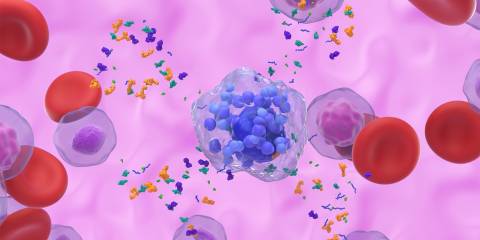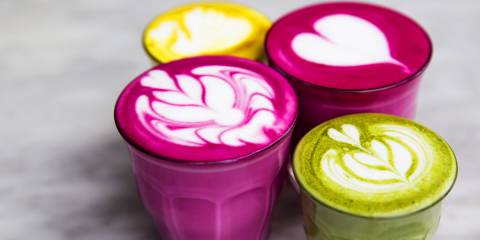Who among us is resolute enough to get through the holiday season without enjoying—or for that matter, baking—a few sweets? While a few extra calories in natural sweeteners and syrups won’t hurt most of us, the new breed of sugar substitutes might. Alarmingly, sugar’s ‘kissing cousins’ may even be more harmful to your health than sugar itself.
Sugar Free Doesn’t Equal Healthy
The perception of sugar free is not unlike that of fat free in the 1980s and early ‘90s. Ever since we started slashing fat, we’ve gotten fatter. With all the new sweeteners on the market today (like high-fructose corn syrup and Splenda), refined sugar consumption has declined, but that doesn’t mean people are consuming fewer calories. In fact, when Jelly Belly added Splenda (aka sucralose) to its sugar-free jelly beans, this artificially sweetened candy had only one calorie less than the original!
The real problem is that Splenda has been linked to a variety of unwanted symptoms from bloating and stomach cramps to headaches. Even the company Web site has warned against giving sugar-free jelly beans to children under three years of age.
Another popular artificial sweetener, NutraSweet (aka aspartame or Equal) appears to deplete the body’s supplies of chromium—a trace mineral critical in sugar metabolism—and may increase cravings for sweets. Aspartame has recently been linked to migraines, particularly in children and teens, possibly as a reaction to its metabolite formaldehyde.
The Center for Science in the Public Interest has concluded that Sunette (aka acesulfame potassium, or Sweet & Safe and Sweet One) may cause cancer, so avoid sugar substitutes. Even older artificial sweeteners, like Sweet’N Low (aka saccharin), a petroleum derivative, can cause problems in sensitive individuals.
Overconsumptive Malnutrition
Refined sugar contains calories and not much else. It’s a known immunosuppressant, interfering with the transport of vitamin C, causing mineral imbalances, and neutralizing the action of essential fatty acids.
Even worse than sugar is high fructose corn syrup (HFCS), a concentrated sweetener that the brain doesn’t recognize, so it easily overrides the body’s natural ability to feel full, leading to overeating and eventually overweight. HFCS is found in just about every mainstream supermarket food: baby formulas, baked goods, breakfast cereals, cakes, candies, cookies, energy bars, frozen foods, juices, ketchups, pasta sauces, salad dressings, yogurts, and more. No wonder that consumption of HFCS increased an incredible 1,000 percent from 1970 to 1990 alone.
When high fructose corn syrup became commonplace, obesity levels began to soar. While the government has been offering subsidies to corn growers (saving the food industry millions of dollars with this cheap sweetener), the rate of overweight and obese children and teens has risen 100 percent.
That’s not the only concern. HFCS appears to affect our bodies differently than table sugar (sucrose). The liver needs to metabolize fructose, so HFCS is quickly absorbed into the cells of the body without the aid of the hormone insulin, which regulates blood sugar, and without the subsequent increase in leptin, a hormone that regulates appetite.
It seems no coincidence that the same time the country was quietly being slipped HFCS in the general food supply, average cholesterol levels were going through the roof, not to mention the trend of increasing triglyceride levels and abnormal liver tests. High fructose corn syrup skips right past the need for insulin production; this means your body doesn’t signal that appetite has been satisfied. You’re more likely to keep on eating, especially if these foods are also low in fiber.
Naturally Sweet
The human body only needs about two teaspoons of glucose, or sugar, in the bloodstream at any one time. This small amount is easily supplied by eating grains, legumes, and vegetables, although fruits (containing fructose, fiber, and a number of important nutrients) quickly and naturally satisfy a sweet tooth.
For holiday baking, there’s a wealth of natural sweeteners to use. Dehydrated cane juice crystals (aka Sucanat) make a simple substitute for white sugar—and add a few nutrients. Produced from pulverized dried dates, date sugar is the same consistency as white sugar—but with fiber and minerals. Since it’s just dried fruit, date sugar is allowed on sugar-restricted diets (people with diabetes can count one tablespoon as one fruit exchange).
Liquid sweeteners are also excellent choices, but you’ll need to reduce the amount of liquid called for in recipes when you substitute them for sugar. For example, agave syrup, which is low on the glycemic index, is much sweeter, so use 25 to 30 percent less than sugar in recipes and cut the liquid a little. Adding their own distinctive flavors, amasake (rice syrup), blackstrap molasses, honey, and maple syrup are liquid sweeteners with added nutrients. Baked goods made with honey have the added benefit of remaining fresher longer than those made with other sweeteners. Substitute it for refined sugar using a one-to-one ratio, but reduce liquids in your recipe by one-quarter cup for each cup of honey used.
Xylitol is a five-carbon compound naturally occurring in birch trees, corn fiber, and many fruits and vegetables. It contains 40 percent fewer calories than sugar. As an added benefit, it fights oral bacteria that cause cavities and plaque. Follow package directions for use.
The sweet herb stevia is the sweetener of choice for people with candidiasis and other health problems. Used for hundreds of years in South America, and of wide commercial value in Japan, this herb is 30 times sweeter than sugar (so add sparingly and taste before adding more). Best of all, stevia doesn’t raise blood glucose levels the way other sweeteners do.




